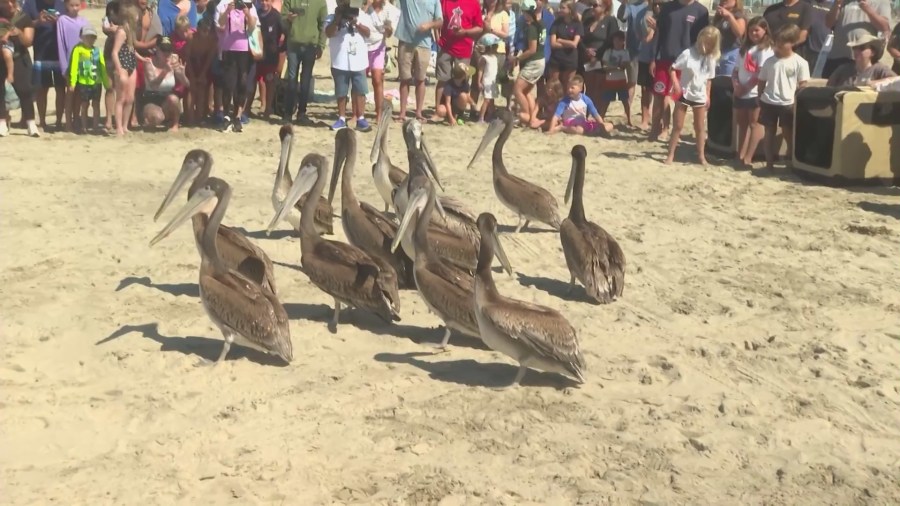After being poisoned during a toxic algal bloom earlier this year, a flock of rehabilitated brown pelicans returned to the wild on Wednesday morning.
Animal care experts at Wetlands and Wildlife Care Center (WWCC) rescued and provided treatment to the birds.
Their oceanic habitat, once toxic due to the algal bloom, is now ready for them to settle there again, as the bloom has died down. WWCC officials coordinated the release for Wednesday morning at Huntington Beach City Beach, just south of the pier.
Huntington Beach Junior Lifeguard team members assisted with the release, giving them a hands-on experience in wildlife conservation and marine ecosystem health, WWCC said in a news release.

The Executive Director of WWCC, Debbie McGuire, called the release of the rehabilitated pelicans “a special moment” for the team of volunteers who worked tirelessly to save them.
“Watching them take flight is a powerful reminder of why our work matters,” McGuire said.
Wednesday’s release didn’t go entirely as planned, as once the 13 pelicans were let out of the cages, most of them kind of “just stood around” on the beach, according to KTLA 5 Orange County Bureau Chief Chip Yost, who attended the event.
“It was several minutes…everyone was watching like “Are they going to go? Are they going to fly away? But eventually they did,” Yost reported. “At least, most of them flew away.”

In the end, there were only two stubborn pelicans: one who flew away but then came back to the beach, and another who didn’t fly away at all.
The pair were taken back to the WWCC facility to be further rehabilitated, as it was determined at the release that they were not ready to be set free yet.
Overall, Yost said the pelicans who did fly away “looked pretty good” in the air. Some of the junior lifeguards he spoke to — none appeared older than 12 — said that a few of the pelicans came back “to say goodbye” as a gesture of gratitude for humans’ help.

WWCC treated about 200 pelicans after the toxic algal bloom, also known as a “red tide” due to its color, formed earlier this year. Half of the birds died, officials said, but out of the other 100, roughly 80 have already been released back into the wild.
The outbreak also affected other sea life, including sea lions, dolphins and whales, while causing local marine care facilities to become overwhelmed with sick animals. It was also found that shellfish harvested recreationally off the SoCal coast should not be eaten due to the toxic bloom.
According to the Marine Mammal Care Center, domoic acid comes from Pseudo-nitzschia australis, a type of algae which produces the toxin considered to be one of the foremost threats to marine animals by the National Oceanic and Atmospheric Administration (NOAA).
It is spread by to bigger animals like sea lions and dolphins when they unknowingly eat contaminated sardines, anchovies and shellfish that already consumed the toxic algae.
